
Based on a Forrester survey from 2019, unplanned downtime costs 35% more per minute than planned downtime.
From natural disasters to cyberattacks, the challenges are real, and the consequences are severe.
Companies are often unprepared for unplanned downtime, and their slow reaction causes a dramatic loss of productivity and money.
How can they prevent this?
This article unveils the answer: A business continuity plan (BCP) is a strategic shield against unforeseen adversities, helping companies withstand, adapt, and emerge stronger from disruptive challenges.
A business continuity plan is a survival tool tailored to each organization’s natural course of operation.
This document merges comprehensive techniques in risk assessment and crisis management.
Companies employ BCPs to anticipate potential threats like pandemics, human error, and technological failures.

A robust business continuity plan goes beyond the recovery process.
A BCP helps you foster a culture of preparedness within your organization.
While recovery focuses on responding after an event, preparedness plans for and mitigates risks before they escalate into crises.
For instance, hospitals must have backup generators and detailed protocols to ensure continuous patient treatment, even in blackout scenarios.
For online services, maintaining alternative server backup systems ensures seamless transactions and customer service even during unexpected system crashes.
This proactive approach ensures your team can either maintain or swiftly restore essential business functions during unexpected events.
Here’s a concise breakdown of the components you can expect to find within a robust BCP.
Set up your trial period and try to create custom documents according to your business needs and eSign them securely.
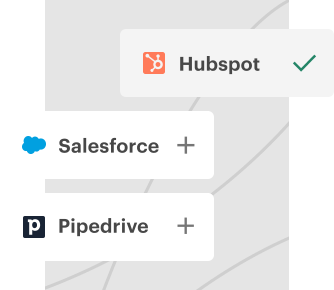
Follow these actionable steps to create and implement a tailor-made BCP for your unique circumstances.
Assess how much revenue could be lost during a specific disruption period.
In practice, this also involves analyzing historical data on incidents like natural disasters, cyberattacks, or supply chain disruptions.
A business impact analysis (BIA) helps you understand how those risks can specifically affect different areas of your business.
For instance, a local hospital identified a power outage as a potential risk.
A BIA helps them understand when and how many patients in the intensive care units could die if power goes down.
That’s where the emergency generators are supposed to kick in.
Answer these foundational business continuity questions to forge a robust BCP.
Clearly state the objectives of the BIA to your employees that the knowledge acquired will help you allocate resources for effective continuity planning
Assign a level of importance to the following departments or business processes:
Your critical business functions must remain uninterrupted.
You’ll want to ensure that your document management and security are robust during the continuity planning process.
For instance, document repository solutions allow you to keep all your documents in one place, making it easier to access critical documents when needed.
Moreover, these platforms provide enterprise-grade security, which is E-SIGN, UETA, and HIPAA compliant and backed by SOC 2 certification, offering the utmost confidence when dealing with sensitive data.
| Domain | Key functions to prioritize | Strategies for maintaining critical functions |
|---|---|---|
| Energy suppliers | Power generation | Diversify power sources (renewable, gas, fossil fuels) to reduce reliance on one grid. |
| E-Commerce sector | Inventory & delivery | Establish backup inventory sources and alternative delivery routes for seamless service. |
| Customer service | Remote support | Utilize cloud-based systems and digital communication platforms for remote customer support. |
| Supply chain management | Supplier diversification | Diversify the supplier base to ensure an uninterrupted flow of goods and materials. |
| Healthcare facilities | Telemedicine infrastructure | Invest in telemedicine infrastructure for virtual patient consultations and maintain redundant life-saving equipment. |
| Banks & financial organizations | Secure, cloud-based systems | Deploy secure, cloud-based banking systems for remote operations and engage cybersecurity firms for 24/7 monitoring. |
| Manufacturing companies | JIT inventory & diversified suppliers | Implement just-in-time (JIT) inventory strategies and maintain contracts with multiple suppliers for critical components. |
| Schools & universities | E-Learning platforms & hotspots | Develop comprehensive e-learning platforms with live streaming, online assignments, and digital libraries. Set up hotspots for underprivileged students. |
| Retail businesses | E-Commerce integration & inventory control | Maintain integrated e-commerce websites with mobile apps, offer multiple payment options, and ensure efficient last-mile delivery services. |
Keeping all your critical functions running during a disruptive event isn’t always feasible.
That’s why you must define the maximum allowable downtime for these functions in your business continuity planning.
Engage with your stakeholders to understand their tolerance for disruptions and align your recovery time objectives (RTOs).
BCP industry-specific benchmarks and standards can provide valuable insights into what is considered an acceptable downtime within your sector.
You can’t fight disasters alone.
Let’s zoom in on the key players that should always make up your continuity team.
This squad is especially important during a crisis, as they will make real-time decisions to maintain the plan’s effectiveness.
Encourage regular training and exercises to ensure that your continuity team is well-prepared to handle any crisis that comes their way — each member clearly understanding their role(s) and responsibilities.
An actionable plan should provide step-by-step instructions, assign roles and responsibilities, establish clear communication protocols, and define each function’s RTOs.
Here’s an example of how you can craft your business continuity plan.
“This Business Continuity Plan outlines procedures for [Company Name] to swiftly execute and recover business activities, minimizing disruptions during emergencies.”
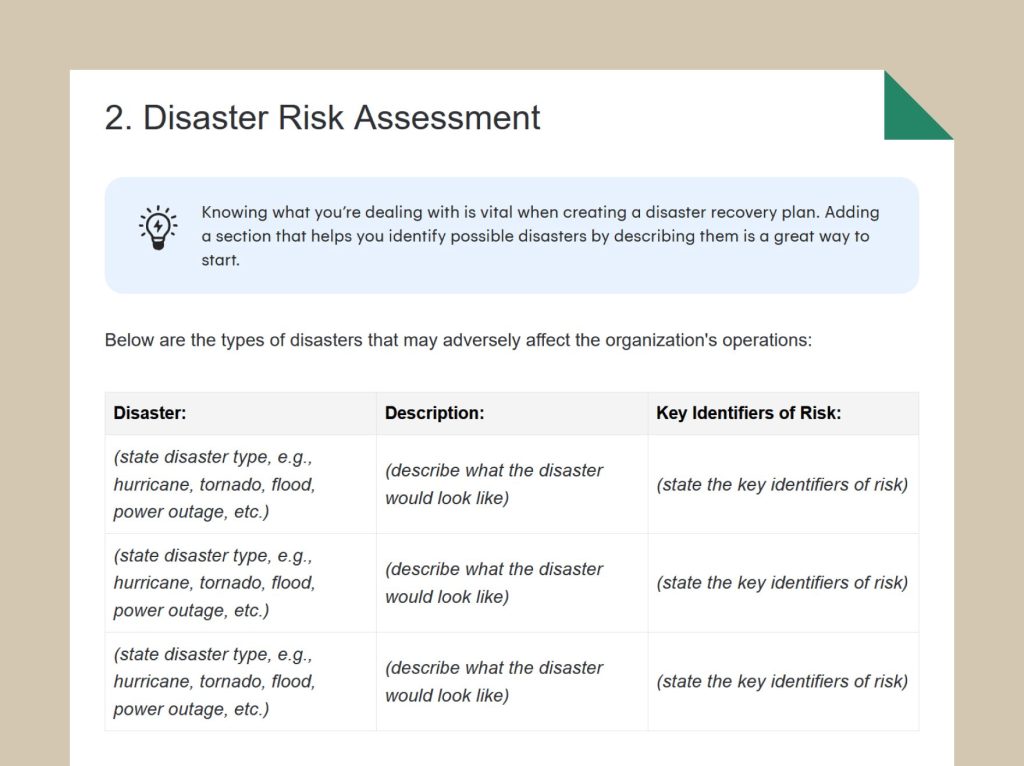
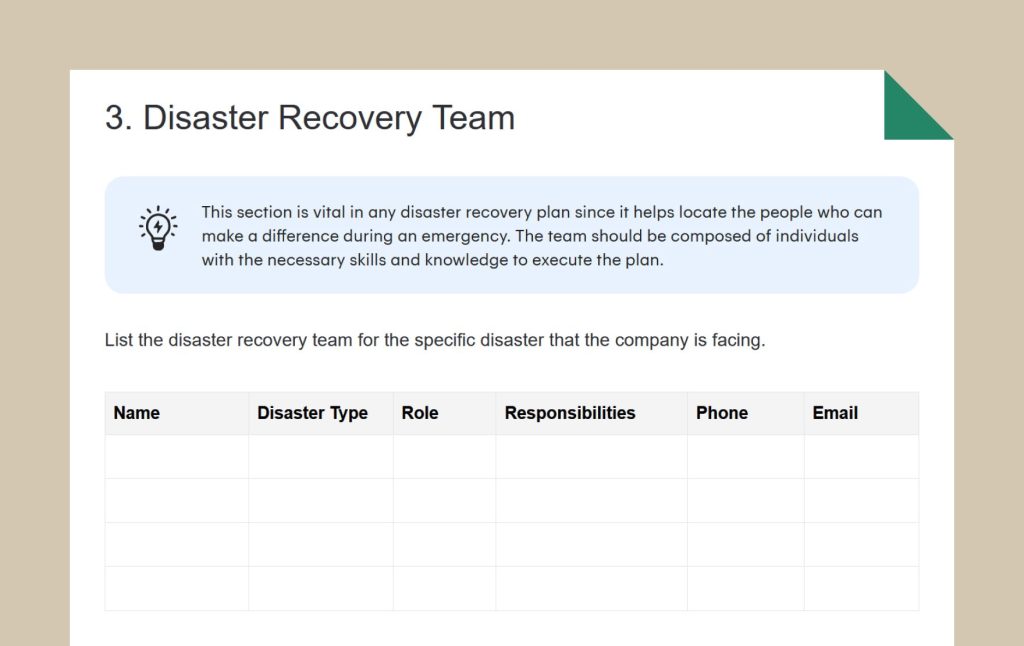
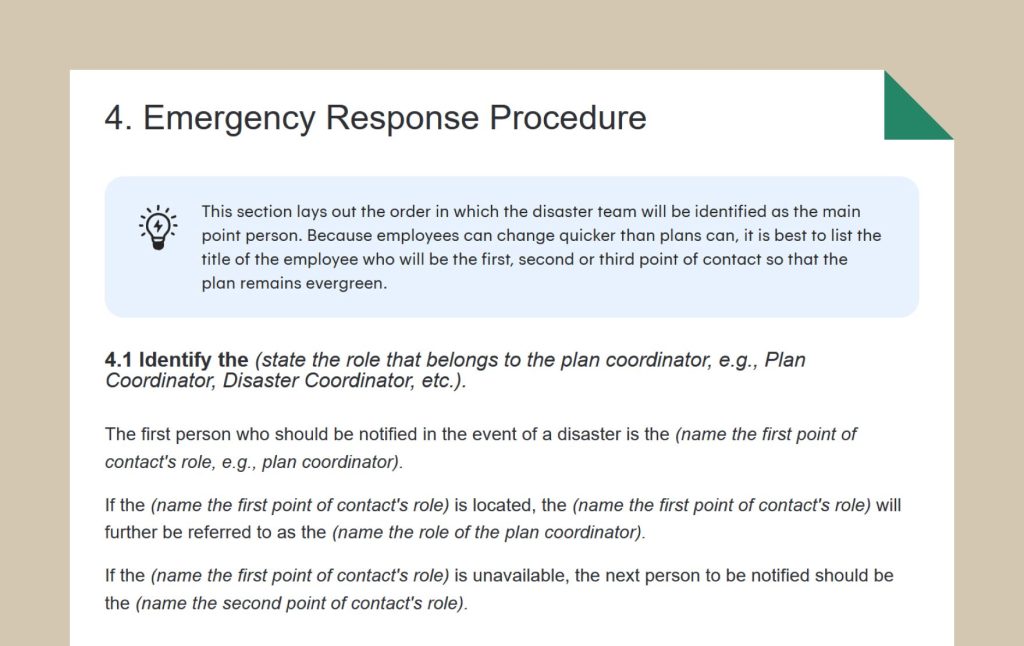
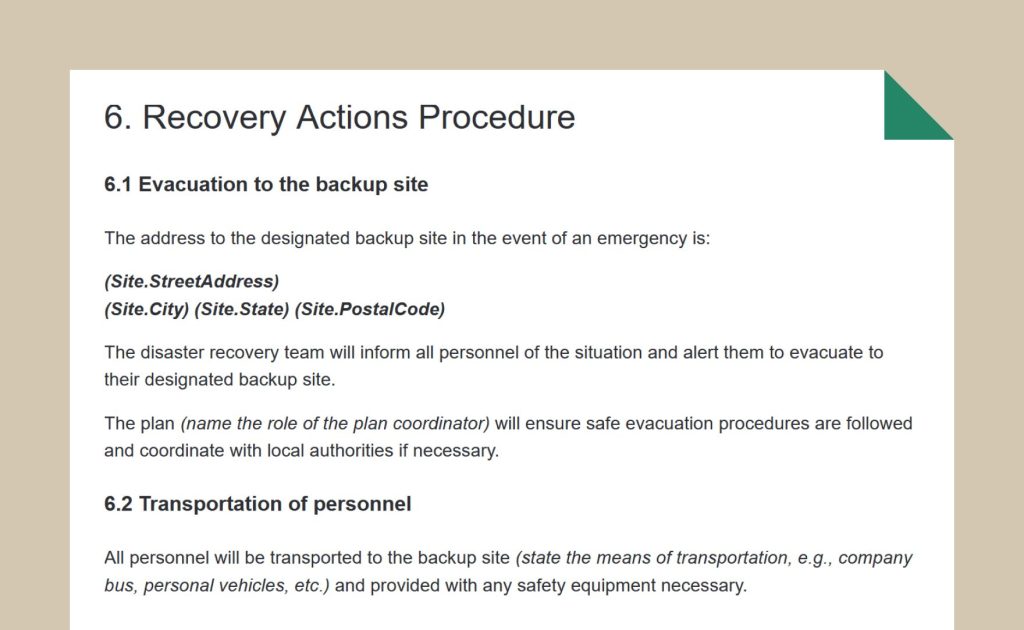
[Company Name] will set criteria for validating/testing the Continuity Plan, reviewing it every [time period] and conducting tests every [time period]. These tests will also serve as training for designated personnel. Testing methods include: [list the methods].
Pro tips:
Without tests, you can’t know for sure how well your methods and continuity techniques will work.
You won’t reveal weaknesses and areas for improvement, either.
Gather your continuity team and engage in tabletop exercises that challenge their decision-making and response coordination.
Create detailed scenarios that mimic real-world disruptions like a cyberattack, natural disaster, or pandemic, and evaluate how the BCP performs under these conditions.
Perform gap analysis after each test to identify areas for improvement.
Regularly conduct security audits and penetration tests to find and rectify vulnerabilities before they can be exploited.
Businesses without a BCP are exposed to cybersecurity threats, including data breaches, ransomware attacks, and system vulnerabilities.
These threats extend beyond financial implications, touching upon reputation damage, legal liabilities, and operational disturbances.
According to a Check Point Research survey, 50% more cyberattacks per week on corporate networks were reported in 2021 compared to 2020.
Another research reported ransomware damage expenses reached $20 billion back in 2021.
The cost is forecast to exceed a mind-blowing $265 billion in 2031.
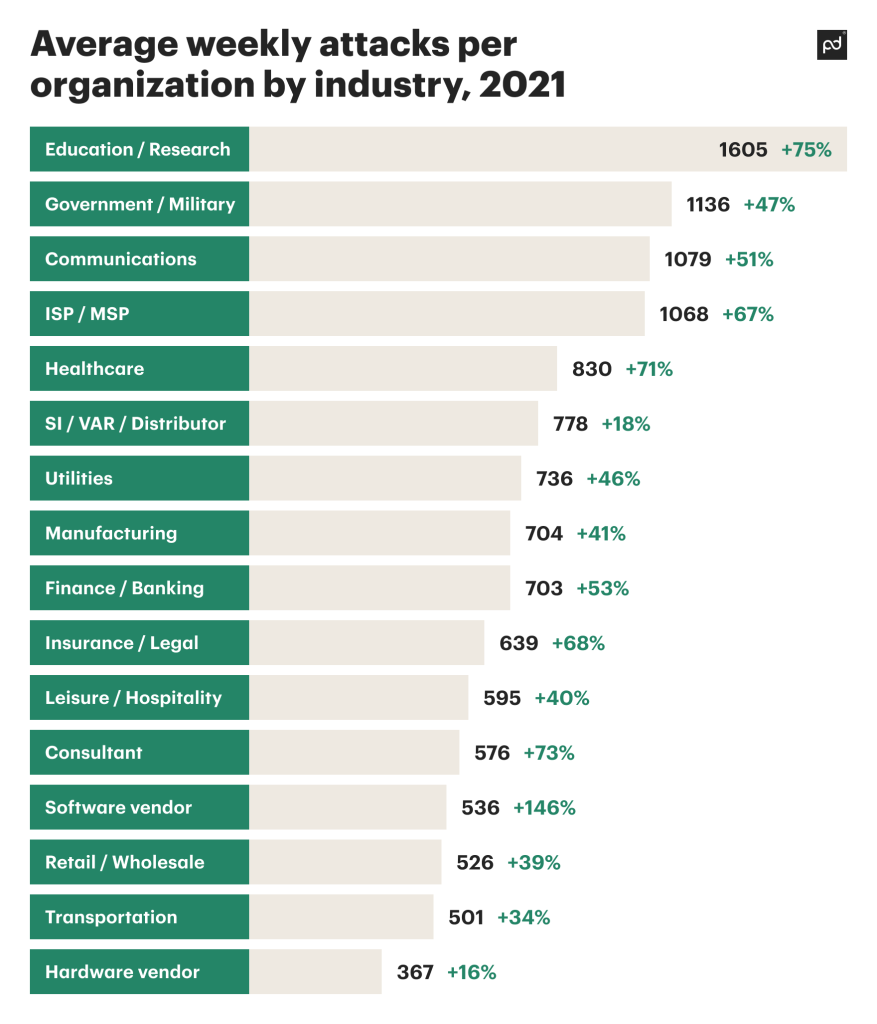
A recent incident forced a gigantic Chinese bank to drive their portfolio/trading info across town in a USB drive as their “BCP.”
This clearly sets cyberattacks as one of the most relevant threats businesses of all sizes face.
What is the difference between a business continuity plan and a disaster recovery plan (DRP)?
There’s none because a disaster recovery plan is a subset of a BCP. The devil is in the details.
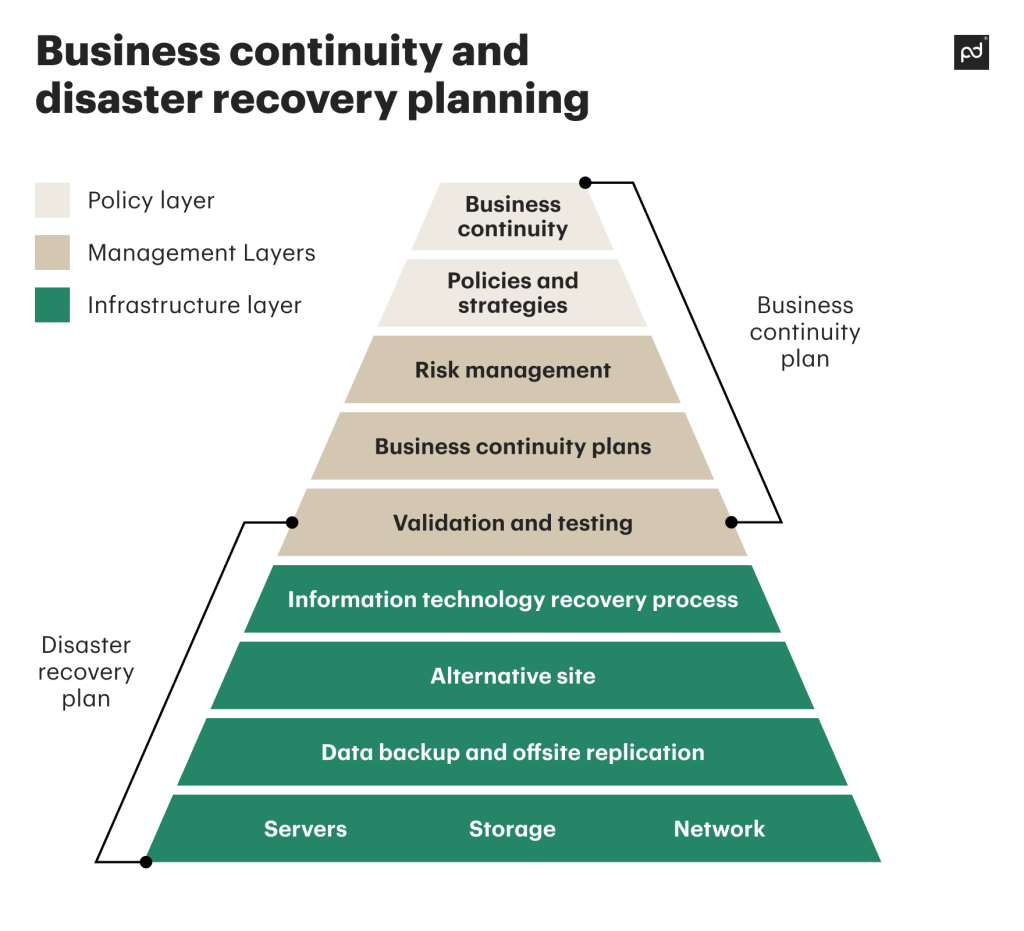
A business continuity plan is your organization’s central shield against disruptions.
It’s your all-encompassing strategy to reduce downtime, minimize damage, and maintain your organization’s overall health.
Meanwhile, a DRP zooms in on your information technology infrastructure and data. It’s your insurance policy for digital assets.
Disaster recovery plans provide precise procedures for data backup, recovery, and system restoration in case of data-related cataclysms.
Together, they form an unbeatable hybrid to make your organization resilient and ready to tackle any challenges that come your way.
In a world where disruptions are the norm, your BCP is a guardian against the unexpected.
PandaDoc is your dedicated partner, ready to facilitate your document automation and provide business continuity plan templates.
We offer the tools and expertise to help you build a robust BCP. No matter the disruption, we’re here to bolster your preparedness.
If you need professional advice, please don’t hesitate to drop us a line anytime you see fit.
Customize your templates with PandaDoc according to your needs and send out documents faster.

PandaDoc is not a law firm, or a substitute for an attorney or law firm. This page is not intended to and does not provide legal advice. Should you have legal questions on the validity of e-signatures or digital signatures and the enforceability thereof, please consult with an attorney or law firm. Use of PandaDoc services are governed by our Terms of Use and Privacy Policy.
Jenny Pak Director of Program Management at PandaDoc
Jenny Pak is the Director of Program Management at PandaDoc. With 10+ years in the technology sector, she boasts extensive experience in both B2B and B2C SaaS environments. Her expertise encompasses program management, strategic initiatives, experiential marketing, and product launch/campaign management. In her free time she enjoys spending time outdoors with her dog and exploring the city of Los Angeles for the perfect spicy margarita.
Reviewed byAshley Kemper VP of Revenue Marketing
Ashley Kemper leads the Revenue Marketing team at PandaDoc. She has worked in marketing for more than 12 years, building marketing teams at Asana, and launching new brands at Double and HyperComply. Before venturing into marketing, Ashley worked in content and publishing at National Geographic, Agence France-Presse, and Government Executive magazine.



Subscribe to get our most-popular proposal eBook and more top revenue content to help you send docs faster.